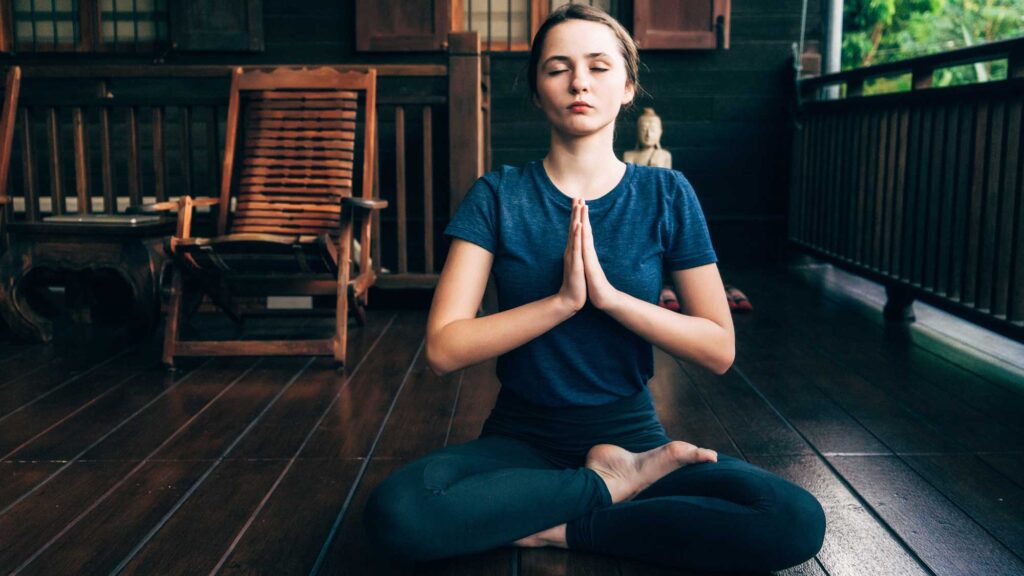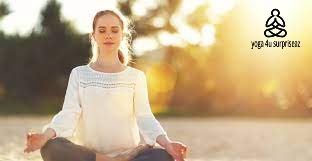Meditation is a practice that has been used for centuries to help people find peace and get in touch with their true selves.
Meditation can be done in many different ways, but breathing exercises are the most popular form of meditation.
Meditation helps you access your innermost thoughts and feelings without outside distractions, which trains your brain to focus on what matters. Meditation is also great at helping reduce stress levels!
As we weave through life, some people find themselves in relationships that have become toxic or end unexpectedly; in other instances, life-long careers stop being nurturing or stop altogether; and there are even times in our lives when imbalances in our health and well-being can suddenly start to manifest themselves as states of dis-ease.
So often, we have defined ourselves as the roles we play in particular relationships or jobs. For example, “I am a mother,” “I am a wife,” “I am a manager,” “I am a vice president.
” When, for whatever reason, these roles and aspects of our lives—which we have used for so long to identify ourselves and to bring us self-esteem—stop satisfying our needs, we can feel a sense of loss, emptiness, or confusion.
Fortunately, there is a timeless way to recapture this connection to our true self: the practice of meditation, which allows us to experience our source.
With this experience, we realize that we are not the patterns and eddies of desire and memory that flow and swirl in our consciousness. Although these patterns of desire and memory are the field of our manifestation, we are, in fact, not these swirling fluctuations of thought. We are:
- The thinker behind the thought.
- The observer behind the observation.
- The flow of attention.
- The flow of awareness.
- The unbounded ocean of consciousness.
We spontaneously realize that we have choices and can exercise these choices, not through some sheer willpower but spontaneously.
Through meditation, we gradually bring harmony, laughter, and love back into our soul and, in the process, rediscover our unconditioned self, which can never really be lost.
By gently washing away the stress, tension, fear, and confusion that often accompany one at the crossroads, we can regain our connection to a calmer, more peaceful life.
And from that moment on, a life filled with joy, harmony, balance, and peace is ours for the asking.
When the Student Is Ready . . .
Over the years, I have often been approached by people who tell me that after they had developed a meditation practice that lasted weeks, months, and even years, for some reason, they just stopped meditating.
In some cases, the routine of their lives took a new direction, and they no longer felt they had time for a ritual that would connect them with stillness and silence.
In other cases, they began a new job and chose to commit all their time and energy to it rather than their meditation practice.
Some have complained that they found themselves falling asleep or getting frustrated with the lack of progress they were experiencing.
Of course, this is all part of the process of releasing the thoughts and stresses that will ultimately connect us to pure consciousness—the magical bliss of the gap.
But without proper instruction, some misinterpret restlessness as an impediment rather than as a positive part of the process.
Then, of course, some have waited their entire life to begin a meditation practice and have now come to a point where they are ready to reduce stress, ease anxiety, bring calm to the chaos, experience peace of mind, and connect more closely with their inner voice on a path to higher states of consciousness. An ancient Buddhist expression: “When the student is ready, the teacher will appear.” This is very true in the context of meditation.
Whether you have: 1) meditated and enjoyed it but haven’t developed a regular practice; 2) taken a hiatus from meditation and are ready to return; or 3) have never before tapped into that stillness and silence within you, today can be the first step on the path to discovering your soul. Once you have glimpsed your soul, everything else that happens in life seems to shine with the brilliance of bliss.
How Does Meditation Work?
We are all engaged in a continuous internal dialogue in which one thought’s meaning and emotional associations trigger the next, usually without our being consciously aware of the process.
Buddhist psychology describes this process as samsara, which can be seen as grooves in the mind that flow thoughts in the same direction.
Our samsara’s are created from the memories of our past and can force us to react in the same limited way over and over again. Most people build up their identity based on samsara without even realizing they are doing this.
In meditation, we disrupt the unconscious progression of thoughts and emotions by focusing on a new object of attention, whether a mantra, our breath, or an image.
Meditation is one of the best ways to loosen the grip of sticky emotions and connect to our true self, which isn’t limited, angry, or fearful, but is infinite, pure consciousness.
Meditation brings us home to the peace of present-moment awareness. It gives us an experience of profound relaxation that dissolves fatigue and long-standing stresses and – as countless studies have shown – promotes both physical and emotional healing. The benefits of meditation include:
• lowered blood pressure and hypertension
• slower heart rate
• decreases cholesterol levels
• reduced production of “stress hormones,” including cortisol and adrenaline
• more efficient oxygen use by the body
• increased production of the anti-aging hormone DHEA
• improved immune function
Beyond these significant health benefits, the greatest gift of meditation is the sense of calm and inner peace it brings into our daily life. When we meditate, we go beyond the mind’s noisy chatter into an entirely different place: the silence of a mind that is not imprisoned by the past or the future.
The expansive awareness you enter during meditation begins to permeate your life outside of your meditation sessions with regular practice.
You might experience flashes of joy and notice feelings of well-being sweeping over you at unexpected moments.
You will begin to walk with more buoyancy and feel warmth and peace in your heart. Your thoughts, actions, and reactions are infused with a little more love and mindful attention.
All of these are signs that you are living in harmony with your true spiritual self, and the result is a deeper appreciation and a profound awareness of the divine quality of existence.
Primordial Sound Meditation: An Ayurvedic Practice for Inner Calm
Primordial Sound Meditation is a powerful meditation technique dating back thousands of years to India’s ancient Vedic tradition.
It is said that the Ayurvedic sages were able to enter extremely deep states of meditation. They could hear the subtle vibrations produced by everything in nature―the sounds of the wind, thunder, butterflies, rushing rivers, and all creation.
According to Ayurveda, these subtle vibrations express the infinite field of pure potentiality, which is the source of everything that manifests in the universe.
When you are instructed in Primordial Sound Meditation, you receive a personal mantra, one of the specific vibrations identified by the Ayurvedic masters. As you repeat the mantra silently to yourself, it creates a mental vibration that allows you to access inner silence and stillness.
As you meditate, the mantra becomes increasingly abstract and indistinct until you enter the field of pure consciousness from which the vibration arose. In the deepest meditative state, all thoughts and worries drop away, and you experience the quiet that always exists beneath the mind’s noisy internal dialogue.

Conclusion:
We all want to be connected to our true selves and the peace that comes with being in tune with our pure consciousness.
Meditation is one of the best ways to do this; it will bring you home, give you a sense of calm, and reduce fatigue from long-standing stresses.
Meditation has many benefits, too: lower blood pressure and hypertension, slower heart rate, etc. Meditation also reduces the production of stress hormones like cortisol and adrenaline levels which have been shown time after time through studies.
Meditation not only brings about physical healing but emotional healing along with enhancing immune function when done regularly. It’s important, though, that meditation should be practiced daily so we can experience these benefits!





